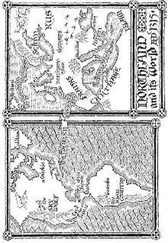Vander Guthrie was a mass of contradictions. When he moved I could see the bones and muscles working under his checked shirt, as if he were some over-engineered simulacrum of a human being. But his diction, vaguely Bostonian, was very precise, academic. And he had that shock of sky blue hair, which I couldn’t help staring at. He was obviously an early casualty of cosmetic genetic engineering.
His eyes darted nervously; his character cowered within that huge body.
If this was a prime choice for a customer liaison worker, I wondered what kind of meatballs they must have behind the scenes here. Some things about software projects never changed, I supposed.
The bus decanted us at a fancy-looking theater. Inside was a brightly lit auditorium, with banks of seats, a deep stage that looked capable of displaying big three-dimensional VRs, and a rich new-carpet smell. “I have to put you through our orientation session,” Vander said apologetically. “Federal law.” He ushered us to the middle of the front row, and with an odd spurt of athleticism he vaulted over the seat backs to take a place in the second row. Then he clapped his hands, and the lights began to dim.
On the stage, a huge imaged-from-space portrait of the Earth assembled, finely detailed, heartbreakingly beautiful. I could see the big swathes of spreading desert around the midlatitudes, the peculiarly spangled effect over much of South America that showed the breakup of the rain forest, and the deep blue of the North Pole, a spinning ocean without a trace of ice. A grave voice began to intone, reeling off statistics about changes in forest cover and ocean temperatures.
“You say it’s the law that we have to sit through this,” said Shelley sarcastically.
“Well, so it is,” Vander said defensively. “For one thing your reactions to the displays are being monitored, noninvasively. There are plenty of crazies out there who seem to think climate change is a good thing, or anyhow something ordained from on high. To them Gea is a kind of quantum-computing Antichrist. Also the indoctrination stuff might actually help you figure out Gea’s results, assuming she actually produces something in response to your query about those methane hydrates.”
“She doesn’t always?”
He seemed offended I asked. “She isn’t a calculating machine, you know. You don’t just turn the crank. Anyhow the overview is often useful. You wouldn’t believe the fantastic ignorance of some of the pols and other celebs we get trooping through here.”
Before us, the automated presentation was getting into its stride.
The Global Ecosystems Analyzer was the pinnacle of efforts to model and predict the Earth’s dynamic natural systems that dated back to various pioneering turn-of-the-century studies. Gea was sponsored and run by a consortium that included the World Resources Institute, the World Bank, and UN development, education, refugee, environment, agriculture, and other agencies. All of this was coordinated by the Panel on Biospheric Change, a central committee of the Stewardship itself.
“The politics behind Gea are a mess,” Vander said ruefully. “It’s nearly as complicated as the climate modeling, and a lot less useful…”
Data poured into Gea from a whole range of sources. There were real-time downlinks from satellites, and from a mesh miniaturized system embedded in the fabric of the planet. “Inside every softscreen sold since 2040,” Vander said proudly, “there is an environmental monitor with a direct link to the Gea suite.” Then there were streams of data, slightly less current but no less vital, on demography, biodiversity, and agriculture. Even relevant peer-reviewed science papers were thrown into the mix. Thus Gea monitored every aspect of the world’s climate and geography, the oceans and atmosphere and the global circulation patterns — and, not least, the impact of humanity.
Vander said, “The trick is to think of the ecosystems as vast machines. Gea captures information on their inputs, such as climatic conditions, geological changes and human-induced changes, and on the outputs they provide for us, such as food, water purification, nutrient cycling, even tourism income — and less direct benefits such as biodiversity. She follows trends as transient as day-to-day fashions for wearing different gemstones in your ear stud, which might impact mining activities, all the way up to the gradual billion-year heating up of the sun, which will — might — one day render the Earth uninhabitable altogether. This is hard science, however. Everything is interconnected, in a messy way.”
I understood what he meant. The science of the very big and the very small are relatively simple: stars and quarks alike are governed by simple laws. It’s in the middle scales that things get tricky. This was why I had always been attracted by engineering. You couldn’t compress life, or indeed the weather, into symbols or codes: the biosphere was its own story — and so it was unknowable to any human mind. Maybe not to Gea, though.
The display moved on to some solutions Gea had already generated. Vander grimaced. “The sales pitch,” he said. “You wouldn’t believe it, but we have to fight to keep our funding up.”
Gea had produced some assessments on what was called a “sub-global” scale. We were shown examples from North America — chosen, no doubt, because we were in an American facility. All over the world glaciers were melting. In the short term the release of huge volumes of pent-up glacier-lake waters could cause catastrophic flooding; that had happened in Peru, Nepal, and northern Italy. But in the longer term the melting was even more disastrous, for the glaciers actually served as frozen reservoirs. The presentation — with pretty images of shrinking patches of old brown ice, floods, dwindling rivers, people queuing at standpipes — told of how Gea’s modeling had helped communities in California adjust to a loss of drinking water, of thirty percent or so over the last decade, without catastrophic dislocation.
The presentation moved on to an even more local problem: the twenty-year drought that afflicted the central plains of America, including Oklahoma. The crucial causative factor was, again, the heat delivered by the Warming. Hotter seas pushed moist air higher than it used to go, causing heavier rain in the tropical regions, but that meant a paucity of rain for a midlatitude belt around the globe. In America this was actually a reversion to conditions that had prevailed eight thousand years ago, when the corn belt had been a “prairie peninsula.” American farmers had it tough, but again warnings by Gea had given them time to prepare. Images of dust bowls and bleached cattle bones from Tajikistan in central Asia showed how bad it might have been.
“Gea can’t solve the climate problems,” Vander said. “That’s not her job. But by showing us the future reliably she can help us cope with the human consequences.”
We listened to this dutifully for a while. It was even well presented. But it was very familiar stuff. And as Shelley whispered to me, “Why is it that the collapse of the environment always reduces to a set of dreary lists?”
Vander Guthrie seemed more interested in the software engineering that lay behind Gea than the climate modeling itself. As the show went on he leaned forward and began to gossip in whispers. “Shelley tells me your uncle worked through the Age of the Help Desks.”
I glanced at Shelley, surprised.
She wasn’t apologetic. “Your uncle George is an old charmer, Michael. He has a lot of good stories about those days…”
Now that we were on his home ground Vander was engaged, even witty. He seemed to have a genuine interest in the history of his discipline, apparently because he was well aware that with Gea he was working on the hottest ticket in the current generation. His job, though, was only a remote descendant of the software analysis George had once made a living out of.
Читать дальше












